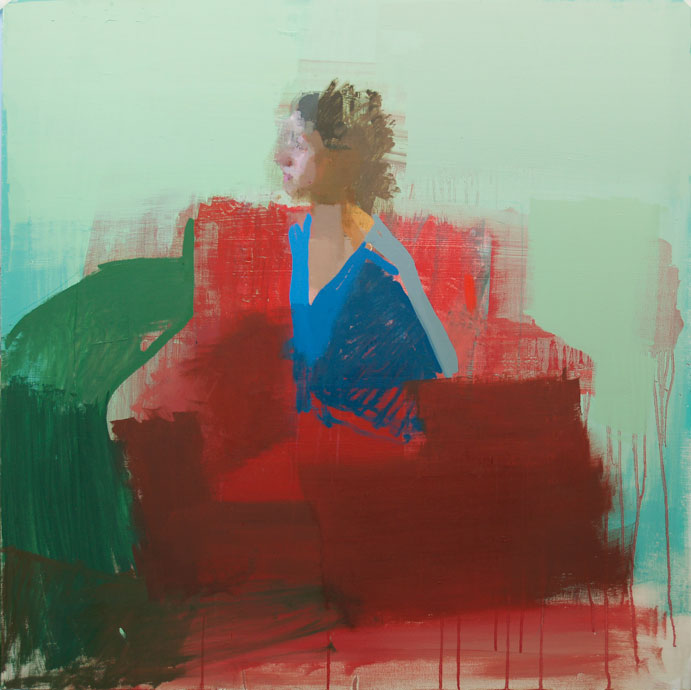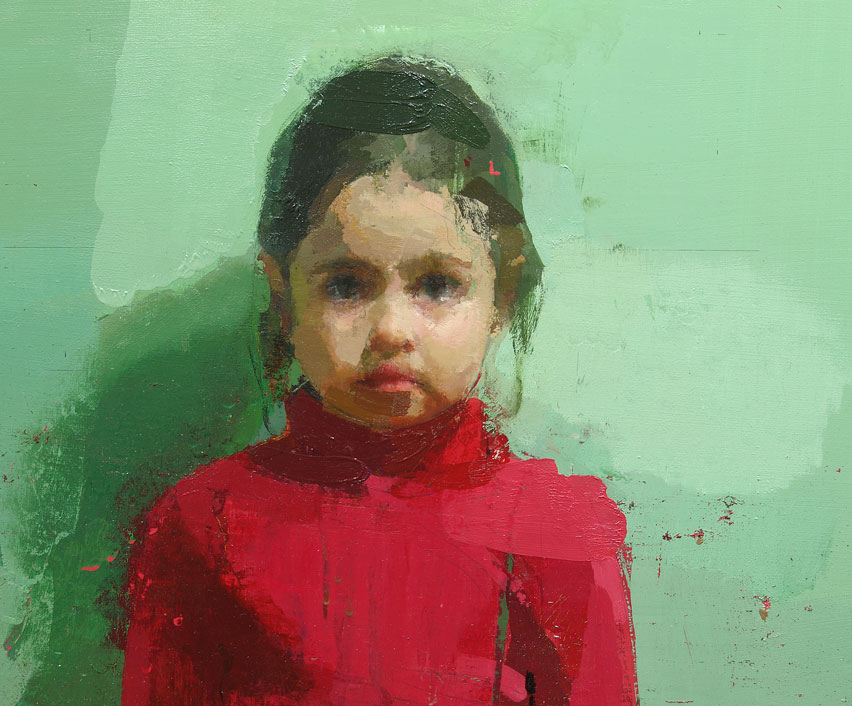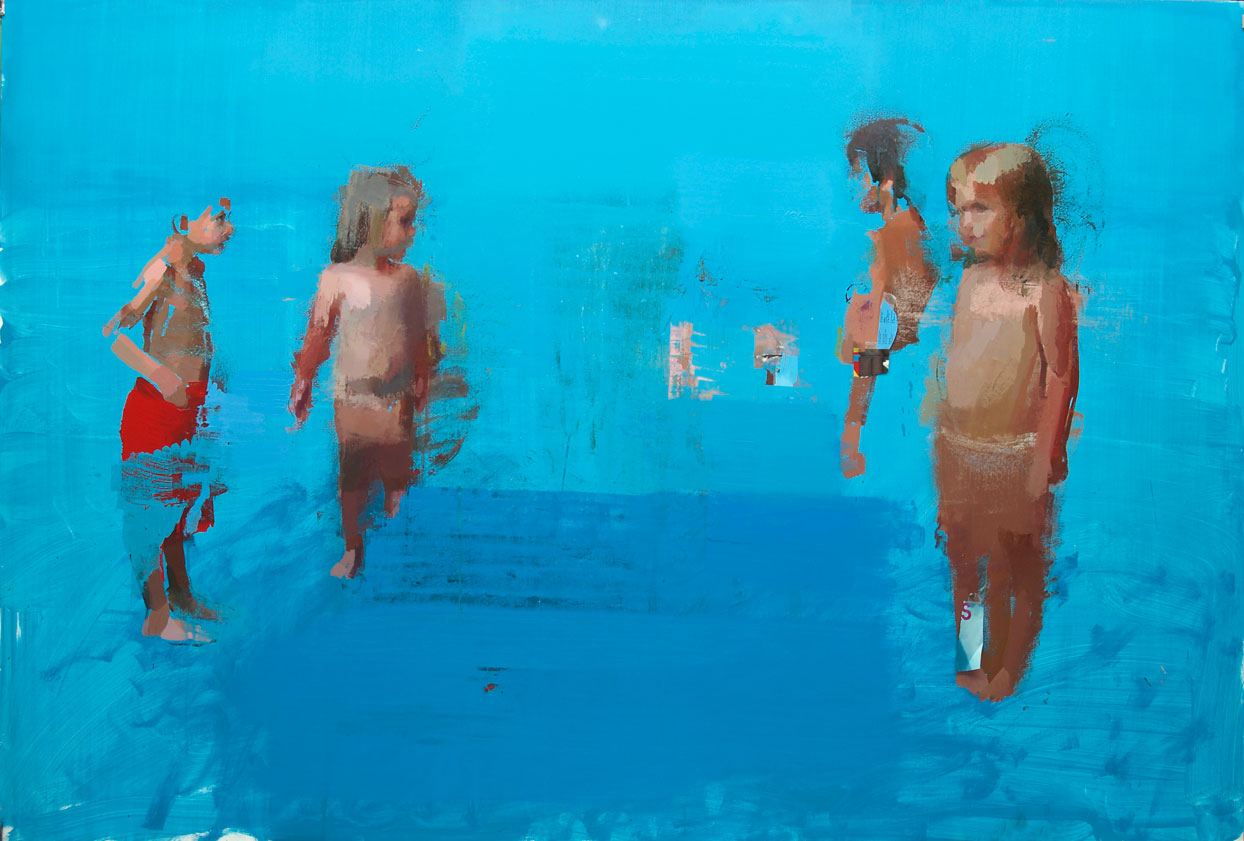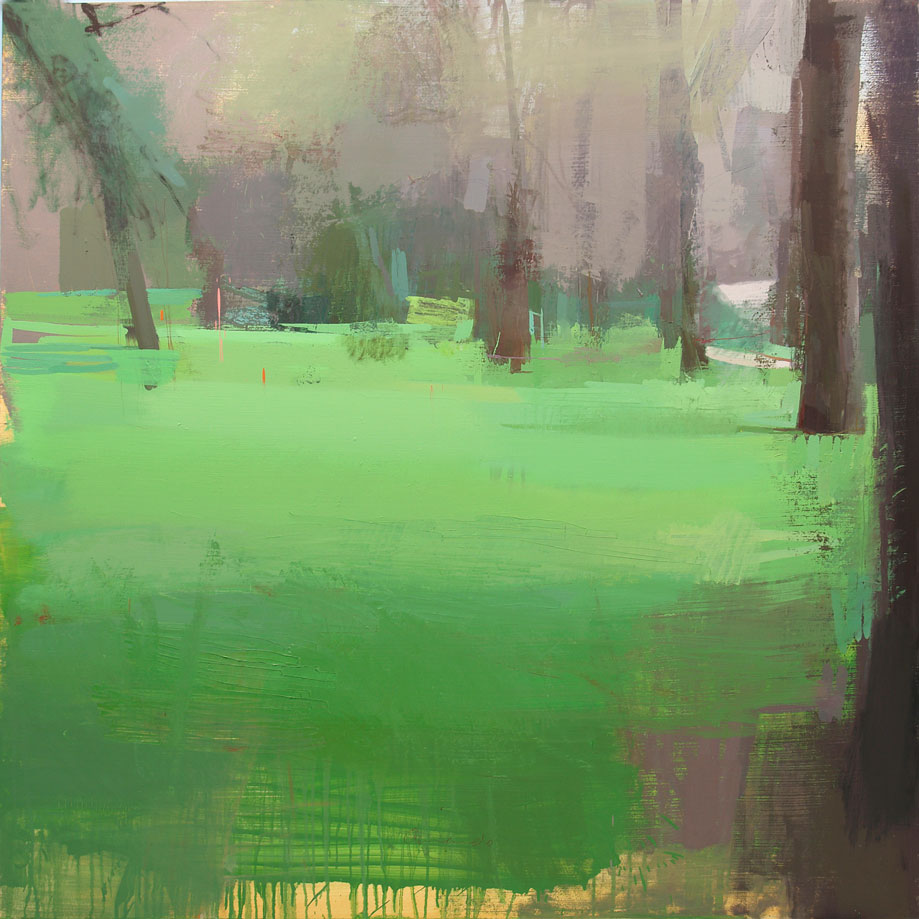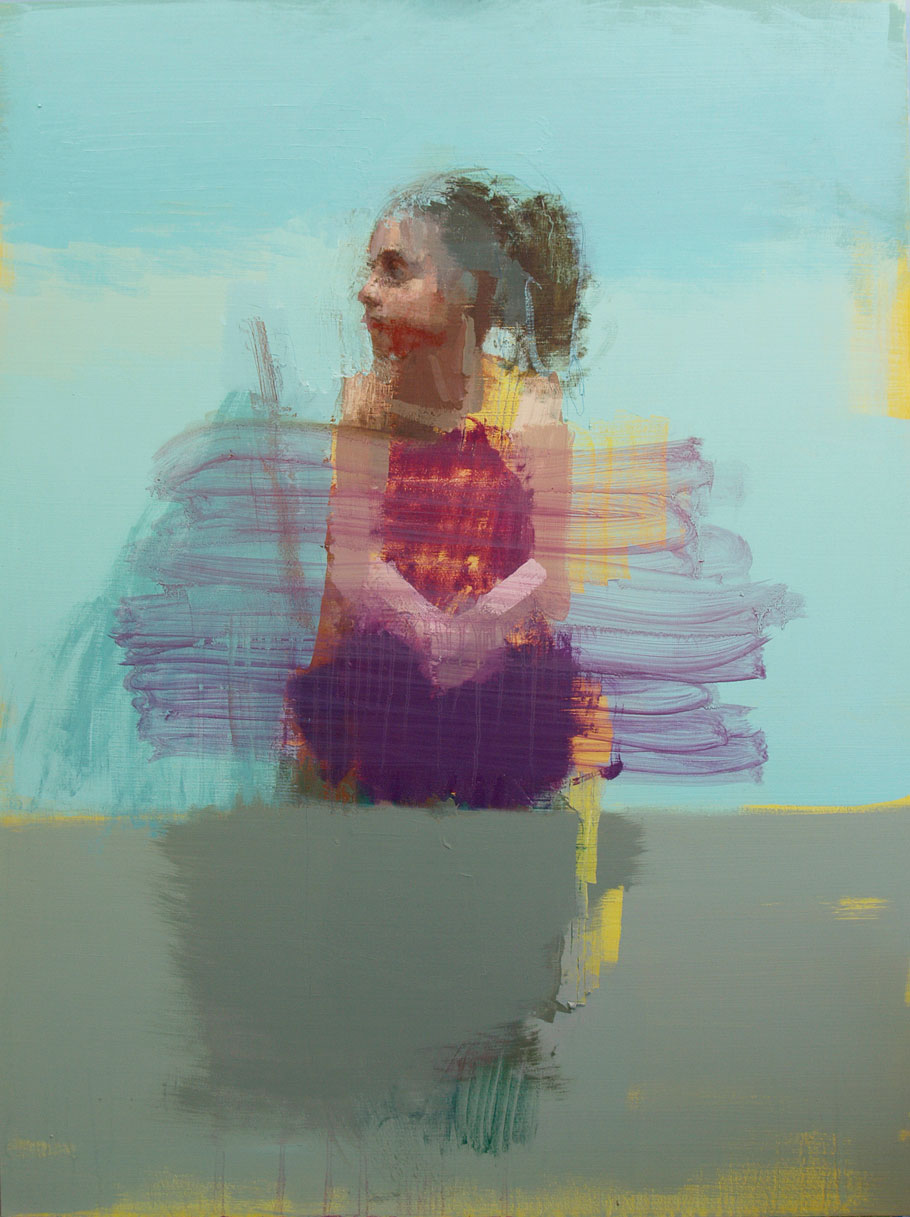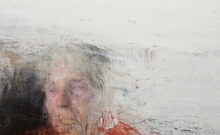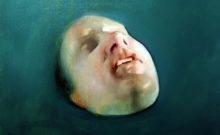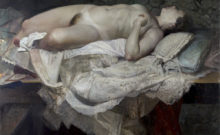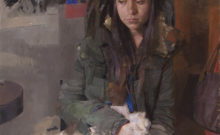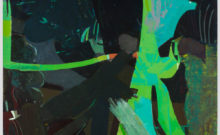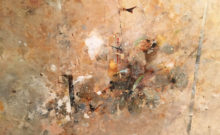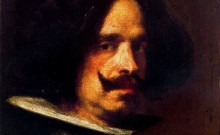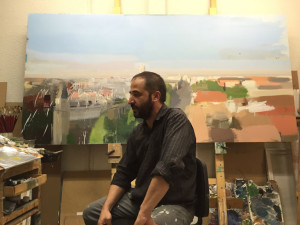
Miguel Coronado in his studio
That purity of heart that genuinely good men possess is plainly visible in Miguel Coronado. And when it comes to painting, this honest artist speaks passionately and perhaps, as he says himself, a bit too loudly. Invariably good humored, he’s always ready to deliver some dry witticism and break into that honest, contagious laugh of his.
When we meet in his studio, we amuse ourselves with a favorite joke, ridiculing the pomposity of artistic language:
– Teacher: Which technique do you employ in order to discern the various composition possibilities that allow your works to acquire such an expressive dynamism? I imagine you draw many sketches before creating this type of collage, do you not?
– Painter: No, not at all. I throw some bits of paper into the air, and wherever they fall, I just stick them there.
Miguel Coronado: the beginnings
Miguel Coronado studied at the Madrid School of Fine Arts, where he immediately stood out from the rest and came to the attention of his teachers. He was an assistant to Jose María Cuasante, who passed on his own passion for painting to him. Miguel was also taught by Florencio Galindo, who bought one of his first works and provided him with all the support he could as his career got off the ground. They have remained friends ever since.
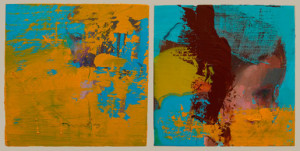
Miguel Coronado: Blue & yellow
His other great influence is Antonio López, a painter whom Miguel has always admired. He knows López’s work like the back of his own hand, and from time to time he seeks guidance and inspiration from his former teacher. But Miguel’s works, containing abstract and spontaneous elements, do not closely resemble those of López. What Coronado has inherited, however, is that extraordinary liking for pure, clean colors, something he takes to its maximum expression.
Miguel Coronado: technique
Miguel usually works from photographs. Although painting from nature holds a fascination for him, he finds himself conditioned by his slow and multi-staged working method. He takes great care over the things that motivate his work and the references that are his starting points. This is especially true of the colors he uses, which should be unblemished and not mislead in any way. He also takes line references from photographs, sometimes through the subtle use of a color pencil or by using the delicate lines provided by carbon paper.
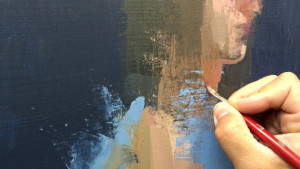
He has no defined method, although he leaves his personal stamp on each of his works. His paintings are built up step by step, growing or aggregating, as Coronado himself says. He normally paints using a wet-on-dry technique, so he has to space out his painting sessions. I believe these forced breaks help him advance along that uncertain path, removed from preconceived solutions and dramatic effects. The only luggage he takes with him on his journey is an extraordinarily keen vision with which he tackles every kind of event, whether deliberate or casual. In an apparently arbitrary way, he combines sweeping, energetic movements with meticulous brushwork. I’ve never seen a painter apply brush-strokes so delicately and with so much care. His medium is almost exclusively oil, while he uses both round and flat ox-hair brushes. The moderately stiff nature of these brushes helps him apply solid and uniform color planes. It’s from him that I’ve learned to love and care for my paintbrushes.
The only other medium he uses is a little turpentine, which he applies when he wants to lighten a color, particularly at the start of a painting. But he mostly paints directly from the tube.
He sometimes uses a spatula or a knife to “move” the paint, and, almost by miracle, a result occasionally emerges that is more real and effective than could ever be achieved with a descriptive, specific and deliberate intent. But the ever-honest Coronado avoids falling into such effectism, only resorting to such techniques when dictated to by aesthetic necessity or his own sensibility; he uses them, but he doesn’t overuse them.
From the inside to the canvas
He is not a narrative painter, nor one for storytelling, because what he has to say is revealed on the surface – which is not to say superficially – through color harmony, texture and brush strokes. His subject matter is simple – inner family life and portraiture, or urban landscapes and gardens.
Any motivation that frees his aesthetic impulse represents a good starting point because his intention is not to capture stories but to approach each painting as an exercise in personal introspection. Through the language of painting itself, he lays bare the sincerest, stripped-back areas of his inner nature, becoming, by extension, a reflection on both human complexity and the human condition.
Truth be told, Miguel Coronado is a pure abstract painter, but reality provides him with a starting point — a familiar foundation on which to build and assemble that masterful web of colors and delicate textures that are the very essence of plastic expression and that give both depth and life to his painting.
You can find more information at: http://miguelcoronado.jimdo.com

